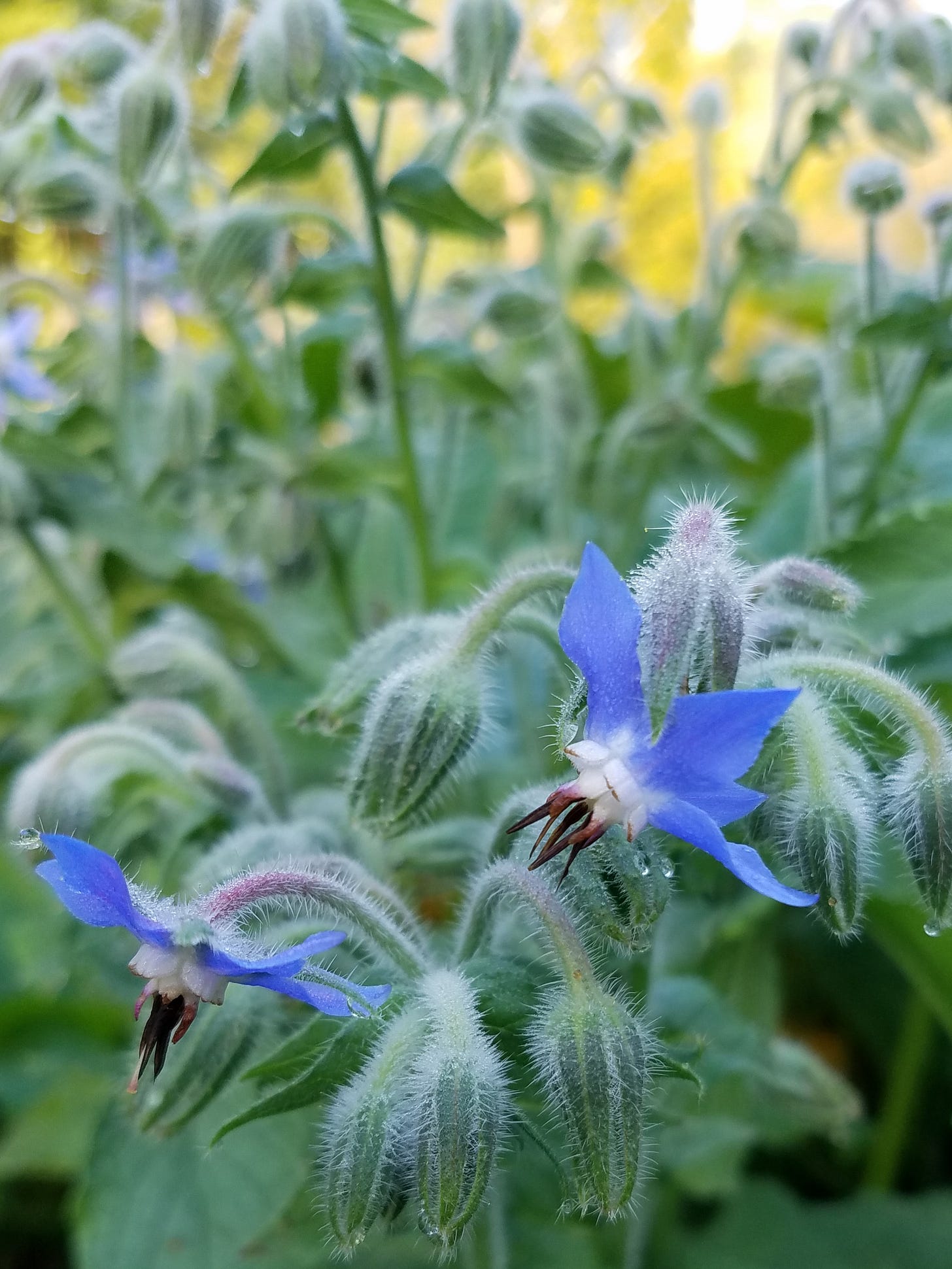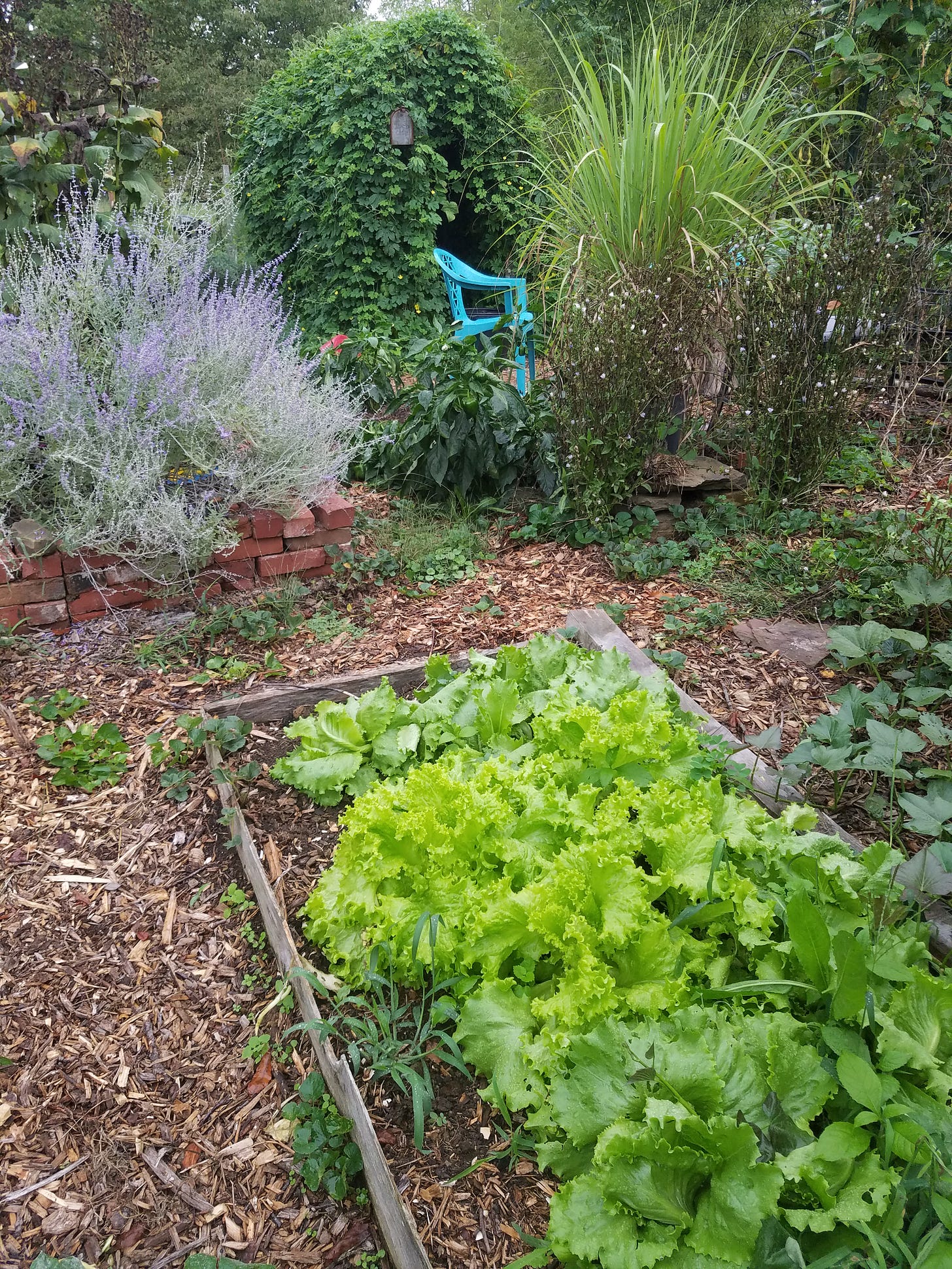Lessons from a season of drought and heat
With surprisingly colorful photographs
The swale paddock remains green despite the drought
There was talk at the local farmer's market this week about the current drought being the worst in many years. One shopper mentioned that she had heard it was the worst in over 100 years. She said the cracks in her yard were so big she was afraid her small dog would fall in.
It has indeed been a terribly dry year, but the worst drought in a century? More likely the worst this century. I remember 1988 and 2001 as very dry and very hot, in fact, much worse than this season’s drought, but can I trust this anecdotal evidence? Personal remembrances are colored by individual circumstances.
In 1988 I was living on the far western edge of Ohio, with far fewer hills and trees than I was used to. It was the worst summer I had experienced even though I had grown up just a few hundred miles to the east. The relentless white sun and lack of moisture seemed to me a personal attack on my comfort. Before the summer ended I left for the cooler climes of New England, only to return in time for the drought of 2001.
A subtle color shift as fall arrives
That first summer of the millennium I remember marveling that the air could be so humid in the near total absence of rain. I had moved back to Ohio with my infant son, and barely went outside in the middle of the day because searing heat made it highly unpleasant. Whether it was really hotter than usual or I was merely more sensitive to it postpartum, I can't say for sure.
My decade-long interlude in the cool north woods was bracketed by two horribly hot and dry Ohio summers, so it's understandable that they stick in my mind. They exist as memorable events in my personal narrative, but were they truly exceptional? Turns out they were. Weather conditions in 1988 affected crops and caused many deaths across the U.S. The year 2001 also saw significant drought in much of the country.
Rain levels, however, are particularly susceptible to individual perceptions. Frequent thunderstorms that rage and blow for portions of afternoons but produce no measurable rainfall give the impression that it “rains all the time.” A misty day not conducive to spending time poolside leads to the the same conclusion. I have learned this from conversations with people who spend significantly less time outdoors than I do, or don't garden, or who are generally unattuned to the world of farming. I work in an industry where weather is of utmost importance, spend as much time as possible in the garden, and I am acutely aware of hay price and availability. Consequently, I pay close attention to precipitation, and I don't find it surprising that my area is experiencing extreme drought.
Borage is still going strong
At a certain point, however, the folks who usually don't pay much attention to rainfall amounts or farming concerns take notice for one reason: their lawns. As brown spots spread across the formerly green expanses, and deciduous shrubs begin dropping leaves six weeks early, there is sudden cause for alarm. Nearly shadeless neighborhoods of Mcmansions are designed to shed water quickly, a trait that works against them in dry times. Lawns kept artificially lush and cut like putting greens don't hold up well to the extremes we've been experiencing,
If I were using this metric to gauge dryness I would have a very different perception of conditions. Here on the farm, greater organic matter content and more trees creating shade mean it's much cooler and lusher here than in many local residential areas. The lawn is still green. My garden still looks decent and is producing summer squash, tomatoes, and bell peppers. It feels dry, but not catastrophically so.
Even though a drought is a weather event that we can directly experience, our idea of what's going on differs based on our subjective experiences and our immediate surroundings. To ascertain if an official drought is occurring and how it compares to past droughts, we rely on data gathered over time and its interpretation by researchers. Our ancestors who had no access to such data would have relied on anecdotal evidence — collective life experience and elder knowledge — to make day to day decisions. Of ultimate importance wasn't whether an event broke records, but how it affected them personally. Were crops failing? Was prey scarce and fishing spots drying up?
Great spangled fritillary on sedum
These ancestors might not have been able to predict drastic and impending climate changes, but they were no doubt better at noticing trends and adapting to changing conditions. We are currently awash with climate and weather predictions, but — ironically — out of touch with what is happening outdoors. Our climate-controlled indoor environments keep us from noticing, except often the most inconsequential things like lawns.
We might be in a better situation if we cared less about climate, and more about weather and other tangible conditions of the natural world. Our complex modeling and the fear it engenders isn't enough to push us to adjust, or to work to mitigate possible future conditions. Part of the problem is that the natural phenomena that were once an integral part of human lives just aren't real enough any more. It's time get to know them again, and autumn is the perfect time. The colors are shifting, the heat will soon dissipate, and rain is on the way. If you have been waiting for a nudge into the great outdoors, let it be my words and photographs. The real world awaits you.
Chartreuse lettuce thrives in afternoon shade







I looked at this Saturday on my phone and now I see it on my computer and the photos are gorgeous; color shift, borage and horses were my favs.
Great piece Lynn Cady. You capture my own experiences of other people's subjective opinions about climate and weather- "It's always raining", something that led me to make more objective measurements so I had something to come back at them with! Here in Cymru, for a change compared to the last few years, we've had regular rainfall throughout the summer and humidity has stayed well up. This has meant my anxiety about forest fires has been low but replaced by a similar disquiet directed at a burgeoning slug population!